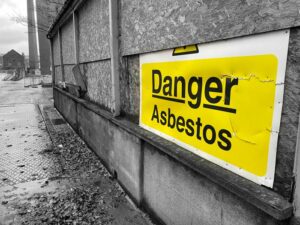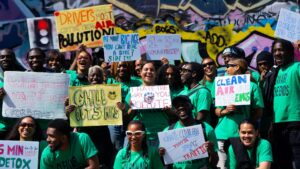By Jonathan M. Tan, MD, MPH, MBI, FASA, pediatric anesthesiologist, Vice Chair of Analytics and Clinical Effectiveness at Children’s Hospital Los Angeles and Assistant Professor of Clinical Anesthesiology and Spatial Sciences at the University of Southern California
In our rapidly changing world, healthcare is essential for ensuring the health and vitality of individuals and populations. To deliver the best care to individuals and communities, healthcare systems and professionals must skillfully adapt to the changes. This includes addressing the impact of extreme weather and environmental factors, like air quality, a key determinant of health.
Unfortunately, one of the largest challenges today is that the critically important information on environmental exposures are not readily available at the point of care for healthcare professionals and patients to guide medical decision making and education. Furthermore, the essential environmental data needed to conduct important research studies on the impact of the environment on health are not readily available either. Without the availability of the right information at the right time, the opportunity to understand, address, and advance the health of individual patients and populations will be limited. We can do better.
The limitations on information available extends to other important insights in addition to environmental exposures, including economic stability, education, social and community contexts, health and healthcare access in the neighborhood, and the built environment. All together these factors are known as the social determinants of health. In fact, it is estimated that up to 80% of the health we experience is the result of the social and environmental factors that we live with. It turns out that this information is also not readily available to use for health systems and health care professionals. We need to do better.
At Children’s Hospital Los Angeles, the largest provider of hospital care for children in California and a top 10 children’s hospital in the United States, we have been working on doing better and building the future of advancing health by bringing social and environmental data to the bedside. We did this by bringing together expert physicians and scientists from different disciplines at CHLA, the Keck School of Medicine, and the Spatial Sciences Institute at the University of Southern California.
We couldn’t do it alone. Our team from CHLA and the University of Southern California partnered with AccuWeather’s atmosphere and data science experts to provide critically important high-resolution data on the environment. By integrating AccuWeather’s high-resolution data on factors such as air quality, UV index, humidity, and other environmental determinants of health with data from our patient’s records, we now have the ability to address critical questions about the impact of environmental exposures on children; the most vulnerable group to the impact of the environment and the health of the planet. Together, we are reimagining what the future of pediatric health and healthcare delivery looks like when we start incorporating social and environmental data into our hospital, our practice, our research, and advocacy efforts.
To tackle this challenge, our team started with the fact that children are the most vulnerable. By integrating AccuWeather’s high-resolution data on air quality and other environmental determinants of health with electronic health records, we can address critical questions about the impact of environmental exposures on children.
The result has led to new and innovative opportunities to identify and reduce the impact of environmental exposures on children across a pediatric health system.
We started by asking a fundamental question: “What is the air quality at home like for all of our patients who receive care at our hospital?” We started with air quality because it is one of the greatest risks to health. We also started with air quality because if we could identify patients at greatest risk, we could take intentional evidence based approaches to reducing the adverse impact of the environment on health.
According to the World Health Organization, “by reducing air pollution levels, countries can reduce the burden of disease from stroke, heart disease, lung cancer, and both chronic and acute respiratory diseases, including asthma.” To put that into a more tangible context, according to the University of Chicago’s Air Quality Life Index, “the average person in the world would have gained 2 years and 3 months of life expectancy if fine particulate pollution were reduced to meet the WHO guideline.”
Importantly, while our question was fundamental and seemingly basic at first glance, getting to the answer required the collaborative work of physicians, public health experts, data scientists, spatial science researchers, and our AccuWeather partnership. After several years, we now have the ability to answer this question and much more. We now can study the impact of many key factors in the environment on the health of all children at our hospital, identify the children at highest risk, and start to help healthcare professionals implement targeted evidence based interventions to improve the care we provide to our patients.
Los Angeles Live Street Level Pollution MapWe have made incredible progress connecting environmental determinants of health with all of our patient records at Children’s Hospital Los Angeles. We have done this by keeping patients our top priority, embracing the diversity of our patient population, ensuring patient privacy, and building for the future. For the first time, we can now understand how environmental exposures impact our children across an entire pediatric health system. This unlocks our ability to better understand disparities in exposures and health as well as find opportunities to intervene and reduce the risks of the environment on the health of our children.
By analysing clinical data from CHLA and environmental data from AccuWeather, our research team has identified key patterns and risks for children, leading to the opportunity to target interventions, resources, and advocacy efforts to improve the health of children in the community. This pioneering work underscores the commitment of our team at Children’s Hospital Los Angeles, University of Southern California, and AccuWeather to safeguard the well-being and health of the next generation amidst growing environmental challenges.
At this stage, our goal is to demonstrate that large disparities in environmental exposure exist across the entire children’s hospital and contribute to health disparities and outcomes among pediatric patients. And yet this is just the beginning. Environmental exposures, including extreme weather and climate change, directly impact the health and safety of our children. We’re working with our partners at AccuWeather to scale our innovative work to the rest of the country and make the leap from describing problems to prescribing solutions.
Our team plans to keep pushing the groundbreaking research on the environmental determinants of children’s health beyond air quality to extreme weather and climate change. This approach uniquely brings together the science of medicine, environmental health, spatial science, data science, and patient safety.
Patients come from all over California and beyond to receive care at CHLA. The team from CHLA and University of Southern California, together with AccuWeather are now taking the next steps to expand the scope of research to the other children’s hospitals across the United States. To build a healthcare system of the future that is prepared to care for impacts of the environment and climate on the children of today, our research must scale with more patients, more health systems, and more data.
















Leave a Reply